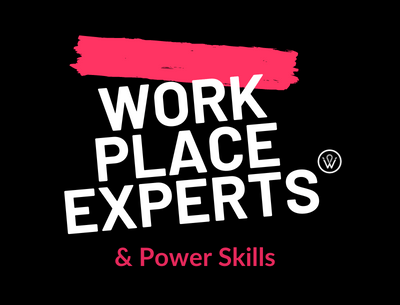
The Future of the Workplace and the Trends of 2022
The future of the workplace is here to stay, and many organizations have already embarked on the journey. The companies that have already embarked on this journey have reaped the benefits of innovation and agility. However large or small you are, you can also reap these benefits. Companies that shift their mindset now to be able to adapt in the future will not only be successful. But also rise above their competition.
In 2022 the future of the workplace will be shaped by five key trends. This will contribute to the future of work and workforce management:
- Mastering the hybrid working
- From great resignation to the year of workers’ power
- Skills as the new operating system
- Employee Well-being is no longer an employee benefit
- Agile adaptation beyond digital functions
Mastering the hybrid working is the future of the workplace:
Working from home was once an option for most people. Nowadays, it’s becoming more common as companies offer flexible working options. There are different types of flexible working arrangements. This might include working from home, co-working, or remote working. Companies also provide office space but allow workers to choose where they want to sit or stand while working.
More than 90% of employers are planning to adopt a hybrid working model for their knowledge workers in 2022. The reasoning behind this trend is a combination of factors. This includes remote working, flexible working hours, and increased use of smartphones. While some people may see this as a negative trend. It represents a huge opportunity for businesses. Employees who work remotely are less likely to leave their jobs because they don’t feel trapped. They’re also more productive when they work remotely. In addition, companies can save money by not having to pay for office space and other expenses related to traditional workplaces.

From great resignation to the year of workers’ power:
The resignation has become a memory, and people are ready to leave the job market behind. The conditions of the workforce have changed from what they were 20 years ago. Many of these changes are irreversible taking on the future of the workplace.
In 2022, spaces need to be optimized to provide the best environment. This will allow workers to perform tasks to the highest level of ability. People will be looking to change jobs and take advantage of new opportunities. Companies will be looking to optimize for the best experience.
By 2022, employees will be empowered with greater control over their careers and their lives. With the right tools, employees will be able to manage their career paths and make better decisions about how to spend their time. These changes will lead to happier employees and higher productivity levels.
Skills as the new operating system are the Future of the Workplace:
The future of the workplace in 2022 will use skills as the new operating system. This means that workers will use their own set of skills to advance not only their careers but also the company. There will be no more managers and no more employees. The majority of workers will be self-managed.
The trend is already underway in many companies, as they are beginning to reward workers with bonuses based on the number of skills they acquire. Workers are expected to thrive in a work environment that demands skills acquisition and continuous learning.
Companies need to invest in skills training to keep up with changing demands. As technology advances, so will the demand for skilled labor. By 2022, there will be a shortage of IT professionals worldwide. To meet this challenge, companies should focus on developing their existing talent pool and investing in education programs to ensure that everyone has access to the necessary skills.
Employee Well-being is no longer an employee benefit:
As we move into the future of the workplace, wellness programs will continue to evolve. Today’s wellness programs include physical activity, nutrition, stress management, sleep, and social support. However, the focus of wellness programs will shift towards mental health. It’s estimated that one out of three adults suffers from anxiety or depression at some point during their lifetime. Normalizing improving the workplace environment to improve the employee’s mental health in the future.
Check out our mental health workshop to improve the well-being of your company.

Agile adaptation beyond digital functions:
Adaptation is key to success in the future of the workplace in terms of technology. Agile methods can help organizations adapt quickly to changing business environments. They’re great for managing projects across multiple teams.
Companies are adopting agile methodologies to increase innovation. It will reduce the risk while increasing efficiency. For example, agile software development. This allows developers to build applications faster. This is done by breaking down large projects into smaller chunks. The result? A project that takes less time to complete and costs less money.
To learn more about agile methods and how they can help you succeed, check out our workshop.
Technology and trends in the workplace will continue to shape the future of work in the years to come. What companies do now could make all the difference in how well they can adapt to a changing workforce and marketplace. Businesses need to consider their employees’ needs. This also includes technology, workloads, employee communications, and education and training programs. If you’re involved in any aspect of work or talent management. Be sure to check out these five trends that are likely to shape the future of work.




